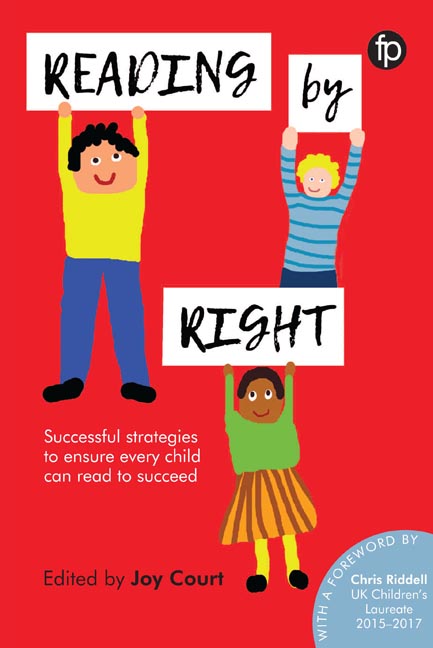Book contents
- Frontmatter
- Dedication
- Contents
- List of figures, boxes, case studies and appendices
- Foreword
- Contributors
- Introduction
- 1 Supporting every child to read
- 2 Listening to their voices: what research tells us about readers
- 3 Becoming a reluctant reader
- 4 Reading Club: a case study from Finland
- 5 Trained reading helpers: Beanstalk's magic ingredient
- 6 Let all children experience the joy of reading: promoting children's reading in Korea
- 7 Reflecting readers: ensuring that no one is excluded
- 8 Pulling in reluctant readers: strategies for school librarians
- 9 Not just for the avid reader: inclusive Carnegie and Kate Greenaway shadowing
- 10 Listen up! How audiobooks support literacy
- 11 Reading the future
- Index
8 - Pulling in reluctant readers: strategies for school librarians
Published online by Cambridge University Press: 08 June 2018
- Frontmatter
- Dedication
- Contents
- List of figures, boxes, case studies and appendices
- Foreword
- Contributors
- Introduction
- 1 Supporting every child to read
- 2 Listening to their voices: what research tells us about readers
- 3 Becoming a reluctant reader
- 4 Reading Club: a case study from Finland
- 5 Trained reading helpers: Beanstalk's magic ingredient
- 6 Let all children experience the joy of reading: promoting children's reading in Korea
- 7 Reflecting readers: ensuring that no one is excluded
- 8 Pulling in reluctant readers: strategies for school librarians
- 9 Not just for the avid reader: inclusive Carnegie and Kate Greenaway shadowing
- 10 Listen up! How audiobooks support literacy
- 11 Reading the future
- Index
Summary
Introduction
This chapter will outline some of the challenges faced by school librarians across all sectors when seeking to engage with reluctant and less-able readers. Three case studies will be presented; in each instance these can easily be adapted to meet pupil needs and can also be used to target less-engaged boys. The outcomes of the three case studies are supported by quantitative data and evidence derived from other research.
Impact of school libraries upon reading for pleasure
According to a study conducted in Canada (Howard, 2011), children and young people read for a variety of reasons. Eighty-five per cent reported that these included the following: to improve overall thinking and literacy skills, to better understand the world around them, to increase social consciousness and empathy, for empowerment, to be entertained, to escape their daily lives and problems, to relax and find reassurance. If these are obvious benefits in a stressful and increasingly shrinking world, one of the challenges facing school librarians is how to effectively engage with reluctant readers outside the classroom, those ‘hard-to-shift’ children and young people for whom reading is a negative and often bewildering experience.
As Nicola Morgan points out in a 2015 blog post, ‘school libraries … catch every child, from every sort of family. School librarians are trained to recognize every type of reader, identify reluctance or difficulties, inspire and boost, recommend likely catalyst books, and can create “initiatives” that work. They are a safety net when children have missed out on access to public libraries or when parental support is restricted.’ Morgan's language here, affirming that school librarians inspire and boost, that they create stimulating reading opportunities and provide a catalyst for meaningful reader development, underpins how we all feel: this is what we can do; moreover, what we ought to be doing and are passionate about. But how to get the neediest and, possibly, the least willing pupils through the door? How do we break down barriers to reading for pleasure; how can we engage more boys with reading outside the classroom and eradicate the often-expressed view by older pupils that being seen in the school library is ‘social suicide’?
- Type
- Chapter
- Information
- Reading by RightSuccessful strategies to ensure every child can read to succeed, pp. 127 - 142Publisher: FacetPrint publication year: 2017



